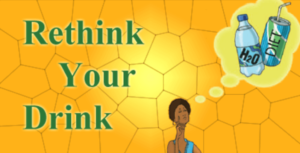The rate of sugary-drink consumption among children and teens – with nearly one-third of kids drinking two high-sugar drinks per day – continues to defy public health efforts aimed at reducing sugar intake.
Overall, 32 percent of boys and 28 percent of girls between the ages of 2 and 19 consumed at least two sugary drinks daily, according to a new health brief from the Centers for Disease Control and Prevention (CDC).

The age groups with the highest consumption – those between 12 and 19 – had a significant amount of their daily calorie intake come via sugar-sweetened beverages, including sodas, energy drinks and fruit drinks. Both boys and girls in the 12 to 19 age group had about 10 percent of their daily calories come from such beverages.
About two-thirds of all kids consumed at least one sugary drink per day, notes the CDC. The new report arrives amid concerted efforts from public health groups to cut back on high sugar intake as a way to ameliorate the growing rate of morbidities associated with high-sugar diets.
“Frequently drinking sugar-sweetened beverages is associated with weight gain/obesity, type 2 diabetes, heart disease, kidney diseases, non-alcoholic liver disease, tooth decay and cavities, and gout, a type of arthritis,” notes the CDC in a fact sheet.
High Sugar Means More Than Soda
While soda has long come under fire among health advocates, the CDC report targets a wide range of sugary beverages, including “fruit drinks (including sweetened bottled waters and fruit juices and nectars with added sugars), sports and energy drinks, sweetened coffees and teas, and other sugar-sweetened beverages (including horchata and sugarcane beverages),” states the report.
While soda may be an easy target, other beverages with high sugar content can be just as harmful to the health of kids, especially during key development phases.
Related: Kids With ‘Obesity Gene’ Are More Tempted by Junk Food Ads
“Fruit drinks, sport drinks, energy drinks and sweetened teas are just as closely linked to negative health outcomes like obesity, diabetes, and heart disease as soda,” said Alyssa Moran, a registered dietitian, in a response to the CDC report published by the American Heart Association.
“Many of these beverages feature nutrient or ‘natural’ claims that can influence consumer perceptions about the healthfulness of the product,” said Moran.
For example, Pepsico recently faced a lawsuit over its claims about the nutritional benefits of its Naked juices, some of which contain nearly as much sugar – about eight teaspoons – as a regular can of soda.
Halting the Sugar Train
The mass effects of a high-sugar diet have increasingly come under the microscope, and some studies are blowing the whistle on reviews that have been sponsored by food groups.
Meanwhile, the American Heart Association issued guidance in 2016 stating that children should limit their sugar intake to no more than six teaspoons per day – much less than a typical soda or other sugar-sweetened beverage.
Related: How to Get Kids to Eat More Veggies

The AHA guidance also calls for a limit among children of eight ounces of sugar-sweetened beverages – per week, not per day.
For a side-by-side comparison of the calories included in certain sugary drinks compared to non-sugary drinks, check out the CDC’s “rethink your drink” materials.
Also, you’ll find an easy way to compare sugar counts in sodas, fruit drinks and other beverages with this sweetness meter from the Harvard School of Public Health.
Richard Scott is a health care reporter focusing on health policy and public health. Richard keeps tabs on national health trends from his Philadelphia location and is an active member of the Association of Health Care Journalists.


![How To: ‘Fix’ Crepey Skin [Watch]](https://cdn.vitalupdates.com/wp-content/uploads/2017/05/bhmdad.png)












